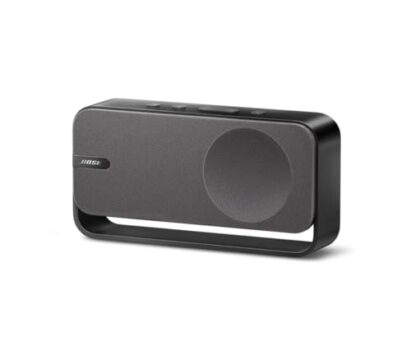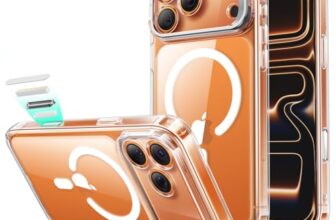A Technical and Aesthetic Deconstruction of the Bose SoundLink Home Speaker
In the evolving landscape of home audio, the traditional bookshelf speaker—once a static, wired component of a larger hi-fi system—has been reimagined. The contemporary user demands a confluence of high-fidelity audio, seamless wireless connectivity, aesthetic elegance, and the freedom of portability. The Bose SoundLink Home Speaker emerges as a direct response to this paradigm shift. It is engineered not merely as a portable device, but as a versatile audio hub designed to blend into the sophisticated modern home while offering the flexibility to roam within it. This review transcends a simple listening test; it is a deep, technical analysis of the product’s design, from its acoustic architecture and wireless protocols to the material science of its premium enclosure. We will dissect the engineering choices that define its performance, its “chic touches,” and its overall value proposition as a top-tier wireless speaker for 2025, evaluating whether its beauty is matched by its technical prowess.

Comprehensive Feature Analysis: An Engineering Perspective
To truly understand the SoundLink Home Speaker, we must deconstruct its features into the underlying technologies and design principles. This analysis examines each component’s contribution to the final user experience.
1. Acoustic Engineering: The Science Behind “Premium, Proven Audio”
The core of any speaker is its ability to reproduce sound accurately and powerfully. The SoundLink Home Speaker’s audio performance is a product of sophisticated acoustic engineering designed to overcome the physical limitations of its compact form factor. Internally, the speaker likely employs a custom-designed, high-excursion full-range driver. This transducer is engineered to move with precision and control, allowing it to cover a wide frequency spectrum from the upper bass to the high treble. To generate the “deep bass” mentioned, this active driver is almost certainly complemented by dual opposing passive radiators. This signature Bose architecture utilizes the internal air pressure generated by the active driver’s movement to vibrate passive cones, which in turn move a large volume of air to produce low frequencies with an authority that a small, ported enclosure could not achieve without distortion or “chuffing.”
This hardware is governed by a powerful, proprietary Digital Signal Processing (DSP) engine. The DSP is the invisible hand that shapes the sound. It implements complex algorithms in real-time to perform several key functions:
- Dynamic Equalization: The DSP actively adjusts the frequency balance based on the volume level. At low volumes, it boosts bass and treble frequencies to compensate for the human ear’s lower sensitivity to them (as described by the Fletcher-Munson curves), ensuring the sound remains full and rich. At high volumes, it can subtly reduce bass to prevent overpowering the mix and avoid distortion.
- Distortion Limiting: The DSP constantly monitors the audio signal and acts as an intelligent limiter, preventing the amplifier from sending a clipped (distorted) signal to the driver and protecting the transducer from being physically overdriven. This is why the speaker can play loudly while remaining crisp and clear.
- Soundstage Widening: Through psychoacoustic processing, the DSP can manipulate phase and timing information in the audio signal to create the perception of a soundstage that is wider than the physical speaker, enhancing the sense of space and immersion from a single point source.
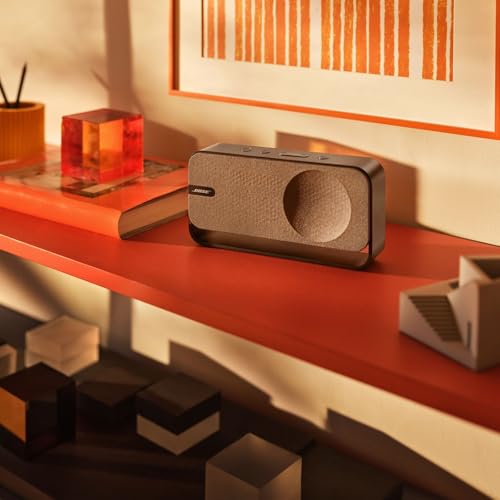
2. Connectivity and Power Systems: The Core of Wireless Freedom
The speaker’s utility as a portable home device is underpinned by its advanced wireless technology and efficient power system.
- Bluetooth 5.3 Protocol: The inclusion of Bluetooth 5.3 is a significant technical specification. Compared to older versions, Bluetooth 5.3 offers tangible benefits including enhanced connection stability, which reduces dropouts even in RF-congested environments. It provides greater power efficiency, which is a direct contributor to extending battery life. Furthermore, it offers lower latency, which improves the synchronization between audio and video when watching content. This advanced protocol ensures a robust and reliable wireless link, which is the foundation of a positive user experience.
- Power Management and Battery Life: The integrated rechargeable battery is rated for up to 9 hours of playback. This performance is achieved through a combination of a high-density Lithium-ion battery pack and the power-efficient operation of the Class-D amplifier and Bluetooth 5.3 chipset. It is important to note that this 9-hour figure is a benchmark, typically measured at a moderate volume (around 50%). Real-world battery life will be a dynamic variable, heavily influenced by playback volume, the complexity of the audio content, and the distance from the source device. Recharging is handled via a modern USB-C port, a universal standard that offers a reversible connector for convenience and reliable power delivery.
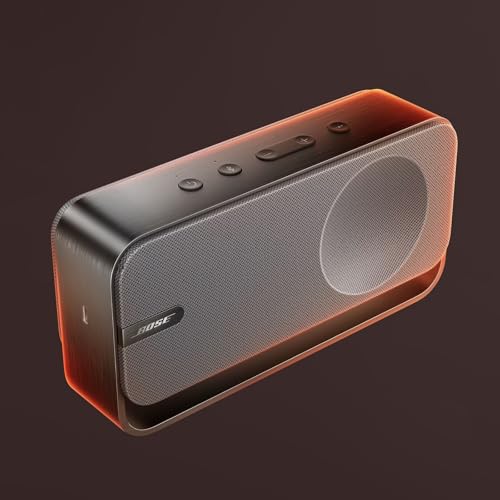
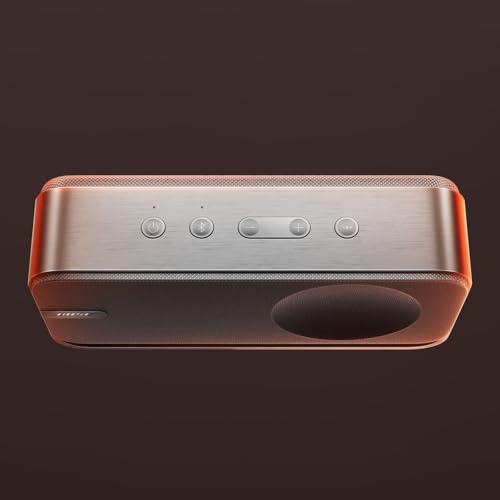
3. Material Science and Industrial Design: The “Beauty Science” Element
A key differentiator for this speaker is its emphasis on premium materials and construction, which appeals to a design-conscious audience.
- Anodized Aluminum Chassis: The use of anodized aluminum for parts of the speaker’s body is a deliberate choice for both aesthetic and structural reasons. Anodization is an electrochemical process that grows a hard, durable layer of aluminum oxide on the surface of the metal. This layer is far more resilient to scratches and corrosion than raw aluminum or paint. From a “beauty science” perspective, it provides a sophisticated, matte finish that feels cool and solid to the touch, imparting a sense of quality and permanence. Structurally, the aluminum provides rigidity to the enclosure, which helps to reduce unwanted vibrations and resonances that could color the sound.
- Acoustically Transparent Fabric Grille: The fabric grille is another component where aesthetics and performance must coexist. The material is chosen for its high-quality look and feel, but more importantly, for its acoustic transparency. This means it is woven in a way that allows sound waves, especially the shorter wavelengths of high-frequency sounds, to pass through with minimal obstruction or absorption. This ensures that the clarity and detail produced by the transducer reach the listener’s ears unimpeded. The fabric also adds a softer, more “domestic” visual element that allows the speaker to blend into home decor more effectively than a harsh metal grille.

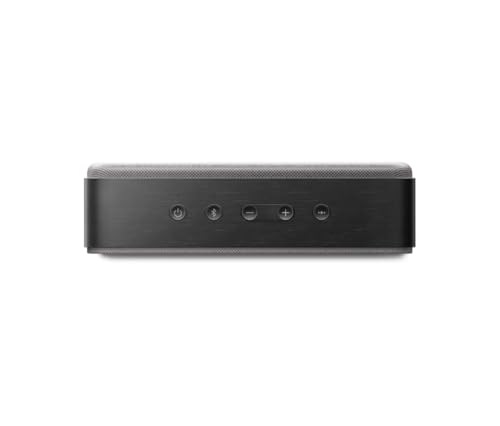
4. Expanded Functionality and User Interface
Beyond its core function as a speaker, the SoundLink Home Speaker incorporates several features that enhance its versatility and ease of use.
- Hybrid USB-C Audio Input: The USB-C port is not just for charging; it also functions as a digital audio input. This is a significant feature. When you connect a laptop or other compatible source, the speaker receives a pure digital audio signal, bypassing the source device’s often lower-quality internal Digital-to-Analog Converter (DAC) and headphone amplifier. The SoundLink Home Speaker then uses its own high-quality internal DAC and amplifier to convert and play the sound, which can result in a noticeable improvement in audio fidelity. This also provides a zero-latency connection, making it ideal for applications like watching movies, gaming, or audio production where a delay would be unacceptable.
- App-less Stereo Pairing: A standout feature is the ability to wirelessly link two SoundLink Home Speakers to create a true stereo pair without needing a smartphone app. This is achieved through on-device controls. One speaker is designated as the left channel and the other as the right. This creates a genuine stereo soundstage with accurate spatial imaging, dramatically enhancing the listening experience for music. The simplicity of this button-based pairing system removes a layer of complexity for the user, making it quick and intuitive to set up an immersive audio environment.
- Integrated Microphone and Voice Assistant Access: The inclusion of a built-in microphone provides two key functions. It allows the device to operate as a speakerphone, enabling hands-free calls with clarity. Secondly, it acts as a pass-through for your connected smartphone’s native voice assistant (like Siri or Google Assistant). A button press on the speaker activates the assistant on your phone, allowing you to use voice commands to control music, get information, or manage tasks, even if your phone is in another part of the room.

Technical Pros: A Synthesis of Engineering Strengths
- Sophisticated Acoustic Package: The combination of custom drivers, passive radiators, and intelligent DSP produces a remarkably full-bodied and clear sound from a compact enclosure, with distortion-free performance even at high volumes.
- Premium Material Science: The use of anodized aluminum and high-quality acoustic fabric provides superior durability, a premium tactile feel, and a sophisticated aesthetic that elevates it above plastic-bodied competitors.
- Versatile Hybrid Connectivity: The inclusion of both advanced Bluetooth 5.3 for wireless freedom and a high-fidelity USB-C digital audio input makes it exceptionally versatile for both portable and desktop use.
- Intuitive, App-Free Stereo Pairing: The ability to create a true stereo soundstage by pairing two speakers with simple on-device controls is a major user experience win, offering enhanced audio immersion without technological friction.
- Modernized I/O and Control: The use of USB-C for charging and audio, coupled with the integrated microphone for calls and voice assistant access, makes it a well-rounded and modern device.
Technical Cons: An Assessment of Inherent Limitations
- Modest Battery Life: While adequate for room-to-room portability, the 9-hour maximum battery life is modest compared to some competitors in the portable speaker market, which may limit its use for all-day outdoor events.
- No IP Rating for Water Resistance: Unlike many portable speakers, this model does not carry an official Ingress Protection (IP) rating for water or dust resistance. This positions it clearly as an indoor or “home-portable” device, not a rugged outdoor speaker.
- Proprietary Ecosystem for Pairing: The stereo pairing feature, while excellent, is proprietary and only works with another identical SoundLink Home Speaker, limiting interoperability.
Conclusion: Final Technical and Aesthetic Verdict
The Bose SoundLink Home Speaker is a meticulously engineered product that successfully executes its vision of a premium, versatile, home-centric portable speaker. Its technical strengths lie in its sophisticated acoustic design, which delivers the signature Bose sound in a compact form, and its modern, hybrid connectivity featuring both Bluetooth 5.3 and a high-quality USB-C audio input. From a “beauty science” perspective, its triumph is in its material choices and industrial design; the anodized aluminum and fabric grille create a product that feels substantial and looks elegant in a way that few portable speakers achieve.
It is not a rugged, go-anywhere outdoor speaker, and its battery life reflects this intended use case. Instead, it is the ideal audio solution for the discerning user who demands excellent sound, versatile connectivity for home and desktop use, and a level of design and material quality that complements a modern interior. The intuitive, app-free stereo pairing is the final masterstroke, offering a simple path to truly immersive sound. For its target audience, the Bose SoundLink Home Speaker represents a nearly perfect balance of performance, portability, and premium design, making it a benchmark product in its category for 2025.
Frequently Asked Questions (FAQs)
Q: How does the SoundLink Home Speaker differ from other Bose portables like the SoundLink Flex?
A: The primary distinction lies in their intended use case and design philosophy. The SoundLink Home Speaker is engineered as a premium, indoor-centric device with a focus on aesthetic materials like anodized aluminum and high-quality fabric. Its inclusion of a USB-C audio input also positions it as a superior desktop or laptop companion. Conversely, the SoundLink Flex is a rugged, outdoor-focused speaker with a high IP67 water and dustproof rating and a durable silicone body designed to withstand drops and harsh environments. The Home Speaker prioritizes style and versatile home connectivity, while the Flex prioritizes durability and extreme portability.
Q: Is any special software or driver required to use the USB-C audio input?
A: No, the USB-C audio functionality is designed to be plug-and-play. It utilizes the standard USB Audio Class protocol, which is natively supported by most modern operating systems, including Windows, macOS, and many Linux distributions. When you connect the speaker to a computer via the USB-C cable, it should be automatically recognized as an audio output device without the need for manual driver installation, providing a direct digital connection for high-quality sound.
Q: Can I use the stereo pairing feature with a different Bose speaker model, like a SoundLink Micro?
A: No, the stereo pairing technology is proprietary and specifically designed to work with an identical model. To create a true left/right stereo pair, you must link two Bose SoundLink Home Speakers together. It is not possible to pair it with a different model from the SoundLink family (like a Micro, Flex, or Revolve) or any other Bose speaker to achieve stereo sound.
Q: Since it lacks an IP rating, how resistant is the speaker to spills or moisture?
A: Without an official Ingress Protection (IP) rating, the speaker should be treated as a premium piece of indoor electronics. It is not designed to be water-resistant. While it may survive a very minor splash if wiped away immediately, it should be kept away from sources of liquid. It is not suitable for use in environments with high humidity or steam, such as a bathroom during a shower, or in locations where it might be exposed to rain or significant spills.
Q: Does the SoundLink Home Speaker support high-quality Bluetooth codecs like aptX or LDAC?
A: Bose typically prioritizes its proprietary active equalization and Digital Signal Processing (DSP) to optimize sound quality over support for third-party high-fidelity codecs. The SoundLink Home Speaker is expected to support the standard and widely compatible SBC (Subband Codec) and AAC (Advanced Audio Coding) codecs. AAC provides excellent audio quality, particularly with Apple devices. There is no official support for aptX or LDAC codecs.
See more posts in the category Speaker.
